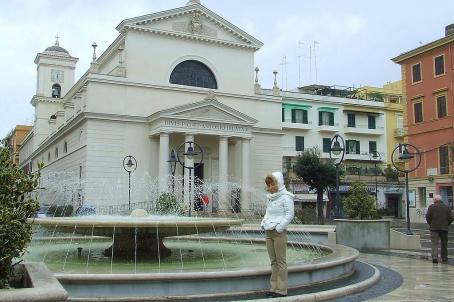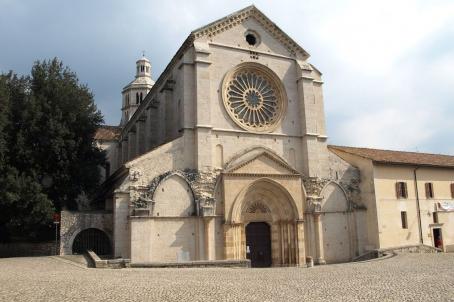Latina Cathedral
Latina Cathedral, dedicated to St. Mark the Evangelist, was built in the 1930s. In 1986 the church of San Marco in Latina became the cathedral of the "new" diocese of Latina-Terracina-Sezze-Priverno.
Latina Cathedral, dedicated to St. Mark the Evangelist, was built in the 1930s. In 1986 the church of San Marco in Latina became the cathedral of the "new" diocese of Latina-Terracina-Sezze-Priverno.

The Church of Saints Pius and Anthony was built between 1851 and 1856 in the neo-classical style. The architect Gaetano Morichini was commissioned to design the parish church. The church was completely restored in 1919. The façade of the church has a projecting plan and is divided into two orders. The lower order is preceded by the Peristasis portico with Tuscan columns supporting the entablature. The upper order is characterised by a semicircular window and crowned by the pediment, in which the coat of arms of Pope Pius IX is inserted.

The Abbey of Fossanova is a daughter of the Abbey of Altacomba from the second half of the 12th century. The Abbey of Fossanova is the oldest example of Cistercian Gothic art in Italy and, together with the Abbey of Casamari, one of its highest expressions. In the infirmary is the room where St. Thomas Aquinas lived, prayed and meditated during the last days of his life and where he died in 1274.

Velletri Cathedral was, according to tradition, a former basilica of the Roman town hall, which was transformed into a Christian church in the 5th century. In the 13th century the church underwent a major renovation with the construction of the polygonal exterior apse and the underground chapel containing the relics of St Eleutheran and St Pontian. The main entrance of the cathedral with its façade was incorporated into the construction of the Bishop's Seminary in the 17th century. In 1950, damaged by the war, the cathedral was restored to a design by the architect Giuseppe Zander.